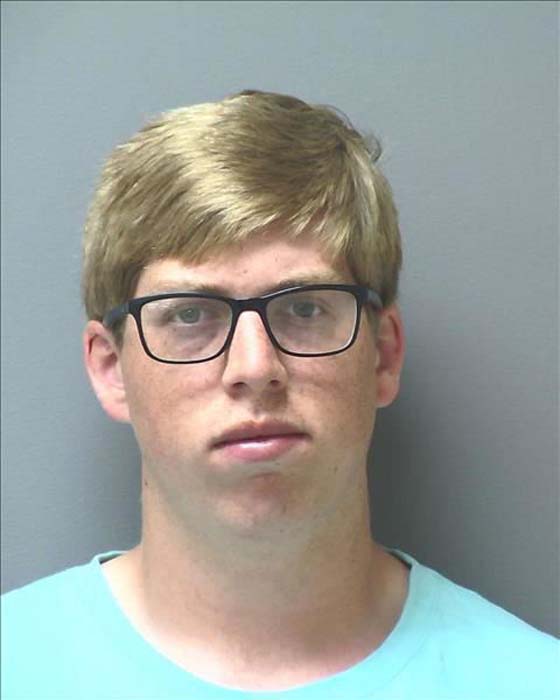School officials explain funding for gifted program
Published 10:03 pm Saturday, September 29, 2007
CAIRO — One of the biggest hurdles to understanding Grady County’s gifted education program is grasping its finances.
The school system earns Quality Basic Education (QBE) funding for gifted students (and 18 other categories of instruction) based on Full-Time Equivalent (FTE) segments.
“We have more than 100 students identified as gifted,” explained Martha Fowler, director of curriculum and instruction. “There are days called FTE Count Days and it is on those days the number of students that are in the system and have been in for the previous 10 days are counted. Those are the students you can receive FTE funding for, based on what program that child is in on that specific day. This means you can have different amounts for different grades and instruction levels. On those days, only the kids who are actually in that classroom are being counted and receiving gifted funds.”
There is still a limit to the number of kids who can be counted, Fowler said, when calculating FTE for QBE funding. An example is a maximum of 12 students in an elementary resource classroom will be counted for funding, even though the maximum class size is 17.
This is the first year Grady County has used more than one state-approved model to serve elementary gifted students, Fowler said, and the system should receive more QBE funding for next year.
Though students identified in different areas receive different allotments, students are not being counted more than once.
“I think a lot of people think students earn gifted funding plus regular classroom funding, but they don’t,” Fowler explained. “The system still has to provide for gifted students in basic services. The funding we receive for them is not just to provide gifted services. We provide them with quality education whether students are in a gifted classroom or a regular classroom. Some of that money allotted for the gifted student has to be spent on that gifted student in other areas like the regular classroom.”
It has been suggested to the system that gifted students should all be grouped in the same classroom all day, every day.
“I can see their point,” Fowler conceded, “but if we took everything we earned for gifted children and that was all we were able to use as funding, we’d barely be able to fund our two full-time gifted instructors. They can’t provide for all the kids identified as gifted from 8 a.m. to 3 p.m. five days a week. Even if we just hired three individual teachers, we would not be able to provide the gifted services we do now.”
Fowler also said there are not enough gifted children at every school (in every grade) to be put together in one classroom.
Principals have been requested to cluster gifted children, but, according to Georgia Code included in the Georgia Department of Education Resource Manual for Gifted Education Services, no more than half the students in any regular class could be receiving gifted services through the cluster group model and the system still receive FTE funding for them.
Complaints have been made to the Times-Enterprise and in public meetings that the system’s gifted program is not receiving all its allocated funding.
Fowler and Dan Broome, finance director, say this is not true.
“I think we adequately fund the gifted education program,” Fowler said. “In fact, I think we go beyond what most systems do, including offering supplements for teachers who serve gifted students.”
The system has not applied for any additional grants through corporations or endowments for the gifted program.
Teachers can apply for mini ($500) or maxi ($5,000) grants through the Grady County Endowment Fund.
This fund was set up by a group of individuals approximately 10 years ago and its goal is to maintain $200,000. Grants are awarded to teachers strictly off the interest of the fund.
Broome said none of these are feasible in order to fund more gifted teachers.
“The majority of grants do not allow a system to use them to pay teacher salaries,” he said. “Usually, grants are for one year and, if you hire someone with grant money one year, you may not get that grant next year. When talking about funding teachers, you want a consistent fund you can depend on.”
Grady County schools also have a goal to keep class sizes as small as possible, Fowler said, and a reason why federal funds have not been pulled to hire more gifted teachers is to keep the student to teacher ratio low.
Broome said understanding gifted program funding can be difficult, especially when using different models.
“When we only used the resource model, all we were required to show was how much we spent on the teacher and supplies for the kids in the resource room,” he said. “When we began using the collaborative model, too, we did not change the way we recorded expenditures. The true statement is we have always spent the money the state allots us for the gifted program on our gifted program. But, up until last year, we’ve always identified expenditures in the resource model.”
According to the GDOE gifted resource manual, funds earned through gifted FTE may be spent in other instructional categories and, prior to the 2003-2004 school year, state law required 90 percent of direct instructional funds earned in any particular category be spent in that same category.
This changed during the 2003 legislative session when lawmakers helped school boards look for ways to help their systems with budget cuts. Boards of education were given flexibility to use funds earned through QBE formulas to fund other instructional programs.
HB 1190 (2004) extended this for another year and eliminated (for FY2005) the program-level test that formerly required the 90 percent rule. This was extended for another year in 2006.
“The state does not currently have a gifted test,” said Broome. “The only test enforced is we have to spend 100 percent of direct instruction funds in direct instruction for all programs.”
Broome said the system has always met and will continue to meet these regulations. He also accepted responsibility for the recent questioning of where gifted funding is spent.
“It’s just a matter of record keeping,” he explained. “If I had modified record keeping in 2004, it would have shown we’ve spent 90 percent of our gifted money on gifted every year. It’s my fault that the whole issue on funding came up. Because there were no tests, I did not go to the extent of identifying those dollars used under the collaborative model, which is rather comprehensive. I have pulled those numbers for FY2007 and will continue to do that in the future.”
* Georgia Department of Education Gifted Program representatives were at a conference and unavailable for comment on this story. The Times-Enterprise will follow up with the GDOE next week.





